Guides • Perfecting your Craft
Last updated on Oct 15, 2025
Story Structure: 7 Types All Writers Should Know
Martin Cavannagh
Head of Content at Reedsy, Martin has spent over eight years helping writers turn their ambitions into reality. As a voice in the indie publishing space, he has written for a number of outlets and spoken at conferences, including the 2024 Writers Summit at the London Book Fair.
View profile →Nothing makes the challenging task of crafting your first book feel more attainable than adopting a story structure to help you plot your narrative.
While using a pre-existing blueprint might make you worry about ending up with a formulaic, predictable story, you can probably analyze most of your favorite books using various narrative structures that writers have been using for decades (if not centuries)!
This post will reveal seven distinct story structures that any writer can use to build a compelling narrative. But first…
What is story structure?
Story structure is the order in which plot events are told to the reader or audience. While stories can be told in a wide variety of ways, most Western story structures commonly share certain elements: exposition, rising action, climax, falling action, and resolution.
Q: Can I break traditional story structure rules and still write a good book?
Suggested answer
The quick answer to this is yes!
The longer answer is that, in order to break the rules of traditional story structure, you must first understand them. Authors who are successful at going completely outside of the 'norm' in storytelling and writing really know their stuff. They understand why the 'rules' are in place, and then they work hard to go against them in a meaningful, intentional, and acceptable way. If you look at experimental literary fiction, for example, you'll see a lot fewer examples than, say, the typical commercial fiction novel. In commercial fiction, there are certain expectations in terms of style, voice, tropes, structure, etc. Readers go to these types of novels to have their reading desires and expectations fulfilled. But that doesn't mean you can't surprise them every now and again.
The great thing about writing fiction is that you can do whatever you want--the sky is the limit. Structure, style, etc. can be played around with, but it must be exquisitely executed. And to achieve that, you must first know the rules like the back of your hand and master them.
Kathleen is available to hire on Reedsy ⏺
Breaking the traditional story structure is best done after you have a few books under your belt and are a seasoned author, especially if you are seeking a traditional publisher. There is enough risk for publishers to take a chance on a new author without the added risk of trying to push something that is out of the box. There are many people in the publishing chain of approval, and trying to sell the idea to the bulk of a publishing staff can be challenging if the author has no track record of sales to speak of.
When starting out, it really is a good idea to "play by the rules" if and when possible. That doesn't mean your book will not be "good" if you break the rules, but it's risky. Because the reality is that not all "good" books get book deals. This business is very subjective, and publishers run for-profit businesses, and they want and expect to make money on their books. Unfortunately, every decision regarding books that get chosen for publication is not based on artistic merit alone.
Melody is available to hire on Reedsy ⏺
A tightly controlled structure will answer a reader's questions, provide a climax followed by resolution and information at the end of the story, further the characters’ development, and unravel any central conflicts. In other words, it's responsible for a satisfying narrative experience that accomplishes the author’s aims.
Writing is an art, but if there’s one part of the craft that’s closer to science, this would be it. Become a master of story structure, and you will have the world at your feet.
Classic story structure
When people discuss different story structures, they often talk about the different frameworks used to analyze stories. When you boil them all down, all stories have certain shared elements.
Elements of classic story structure:
- Exposition. This first part establishes a protagonist's normal life and greater desires, and usually culminates in the inciting incident.
- Rising action. The protagonist pursues their new goal and is tested along the way.
- Climax. Our hero achieves their goal — or so they think!
- Falling action. The hero now must deal with the consequences of achieving their goal.
- Resolution. The conclusion tying together the plot, character arcs, and themes.
These are all common ‘beats’ to most stories. It can be easier to see these moments in genres with higher stakes (such as a military thriller), but you’ll find them in almost any type of story.
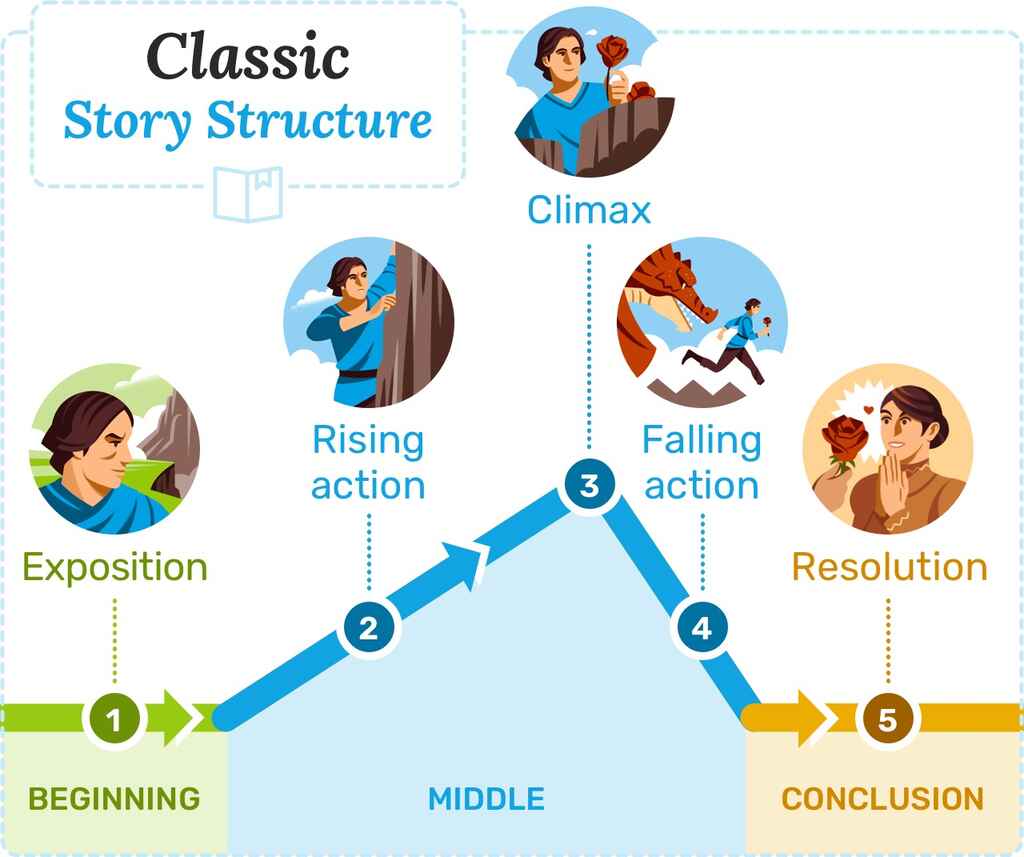 Even in something as seemingly mild as a rural romance, there will be rising action as our heroes tentatively fall in love and an all-is-lost moment where it seems like they will never get together (before they inevitably do). Without these steps, there is no conflict and no story — merely a series of events that will struggle to keep a reader interested.
Even in something as seemingly mild as a rural romance, there will be rising action as our heroes tentatively fall in love and an all-is-lost moment where it seems like they will never get together (before they inevitably do). Without these steps, there is no conflict and no story — merely a series of events that will struggle to keep a reader interested.
Q: Which story structures give beginners the best foundation for writing engaging fiction?
Suggested answer
First, ask yourself, "Whose book is this?" If you were giving out an Academy Award, who would win Best Leading Actor? Now, ask yourself what that character wants. Maybe they want to fall in love, recover from trauma, or escape a terrible situation. And what keeps them from getting it? That's your plot. You can have many other characters and subplots, but those three questions will identify the basis of your story. I always want to know how the book ends. That sets a direction I can work toward in structuring the book.
I like to go back to Aristotle: every story needs a beginning, a middle, and an end. Act I, Act II, and Act III. Act I sets up the story. Mary and George are on the couch watching TV when… That's Act I. We introduced our characters and their lives and set a time and place. Now, something happens that changes everything. The phone rings. A knock on the door. Somebody gets sick or arrested or runs away from home. Something pushes your character or characters irrevocably into Act II. Maybe in Act I, George got arrested. In Act II, he's trying to prove his innocence, and all sorts of obstacles get in the way. Maybe somebody calls Mary and tells her George has another family she's never heard about, and she spends Act II trying to save her marriage or herself. Act III is the outcome. It's when the boy gets the girl or doesn't get the girl or gets the girl and isn't sure he wants her after all.
I'm a big fan of outlining. You're probably going to change it a lot as you get writing and get to know your characters intimately, but it gives you structure, so when you sit down to write, you know what you're going to write about. Even if you don't know precisely how you're going to break your story into scenes and chapters, it's good to know how the book ends so you're moving towards something. Before I start writing a scene, I need to know who is in it, where it takes place, what happens, and why it's in this book. Does it move the story forward? Does it give readers insight into the character? Or is it just taking up space on the page?
Joie is available to hire on Reedsy ⏺
Using a three-act story arc is the easiest way to define a story because at its core, each story has a beginning, middle, and end. A set-up to a journey, a journey, and a conclusion to this journey, will make up the three acts of every story.
Melody is available to hire on Reedsy ⏺
For new authors, some of these structures are a good place to start writing decent fiction without killing inspiration. The three-act structure is a classic, breaking up a story into setup, conflict, and resolution. This makes it easy for writers to establish characters and stakes clearly, build tension through conflict, and wrap up well.
One of the methods that is a good spot to begin is the "Hero's Journey," which charts a hero's journey from challenge, change, to return. Its formal steps govern pacing and character development without much room for imagination.
Why this tool is so valuable to beginning writers is it is less rule than guidepost, giving direction without limiting writers to formulaic composition, permitting them to focus on voice, dialogue, and theme.
As one practices, working through these structures develops an intuitive sense of narrative flow, so that experimentation, innovation, or even breaking the rules feels more natural.
Beginning with a predetermined framework enables authors to balance imagination and clarity and create a story that is engaging, emotionally resonant, and relevant without sacrificing ground for their own distinct imagination to show its face.
John is available to hire on Reedsy ⏺
When I work with new writers struggling about where various story beats go, I typically refer them two The Hero's Journey by Joseph Cambell, and Save the Cat Writes a Novel by Jessica Brody. Both of these describe slightly different elements of what is included in a story.
Now, sometimes writers can get too caught up in fitting their story exactly into these story templates. But that's all they are; templates. An analogy I like to use with authors is that there are cooks, and there are chefs.
Cooks follow the recipe (story structure) exactly, never deviating, and while it can produce good dishes, there sometimes is a lack of creativity within. Chefs, on the other hand, also follow the recipe, but they also know it well enough to deviate from it. Add their own flair, flourish, and spices. By the end, the story is recognizable but their unique take on it.
You have to know the rules to break them, so for newer authors I work with, having them break down their story into the various story beats and plug them in to the two templates above can help them see where each story element fits, and maybe where a story element needs to be added or elevated.
Sean is available to hire on Reedsy ⏺
Seven Story Structures Every Writer Should Know
Now that we’ve established the most essential components of story, let’s look at seven of the most popular story structures used by writers — and how they deploy these components:
- Freytag's Pyramid
- The Hero's Journey
- Three Act Structure
- Dan Harmon's Story Circle
- Fichtean Curve
- Save the Cat Beat Sheet
- Seven-Point Story Structure
1. Freytag’s Pyramid
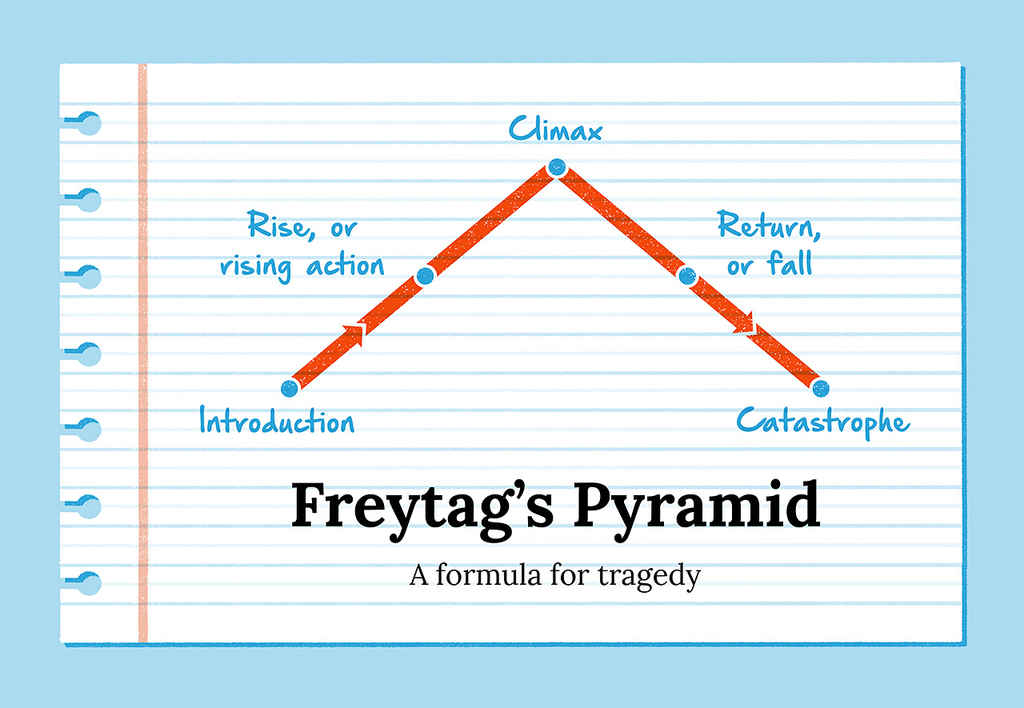 Named after a 19th-century German novelist and playwright, Freytag’s Pyramid is a five-point dramatic structure that’s based on the classical Greek tragedies of Sophocles, Aeschylus, and Euripedes.
Named after a 19th-century German novelist and playwright, Freytag’s Pyramid is a five-point dramatic structure that’s based on the classical Greek tragedies of Sophocles, Aeschylus, and Euripedes.
Structure
- Introduction. The status quo is established; an inciting incident occurs.
- Rise, or rising action. The protagonist actively pursues their goal. The stakes heighten.
- Climax. A point of no return, from which the protagonist can no longer go back to the status quo.
- Return, or fall. In the aftermath of the climax, tension builds, and the story heads inevitably towards...
- Catastrophe. The protagonist is brought to their lowest point. Their greatest fears have come true.
This structural model is less frequently used in modern storytelling, partly due to readers’ limited appetite for tragic narratives (although you can still spot a few tragic heroes in popular literature today). By and large, commercial fiction, films, and television will see a protagonist overcome their obstacles to find some small measure of success. That said, it’s still useful to understand the Pyramid as a foundational structure in Western literature — and you will still see it occasionally in the most depressing contemporary tales.
To learn more, read our full guide on Freytag’s Pyramid here.
If you struggle to structure a novel, sign up for our How to Write a Novel course to finish a novel in just 3 months.
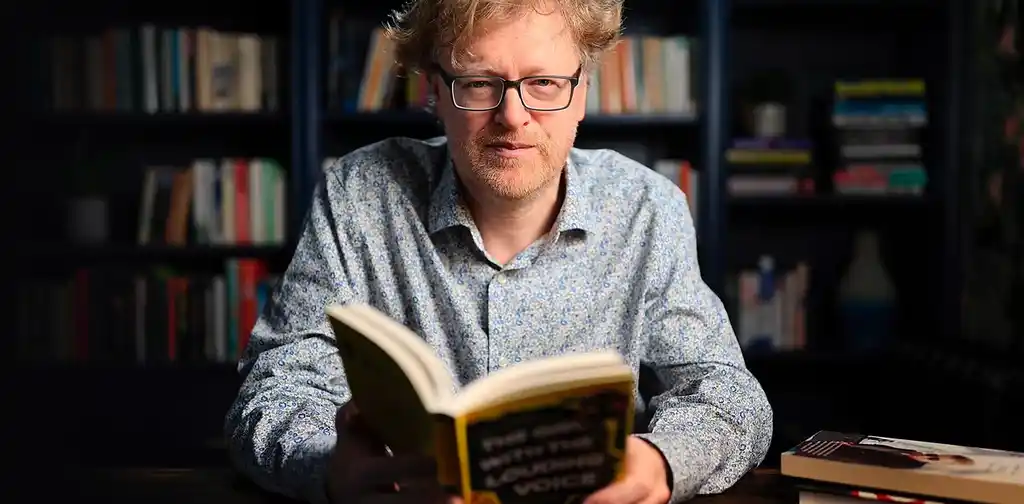
NEW REEDSY COURSE
How to Write a Novel
Enroll in our course and become an author in three months.
2. The Hero’s Journey
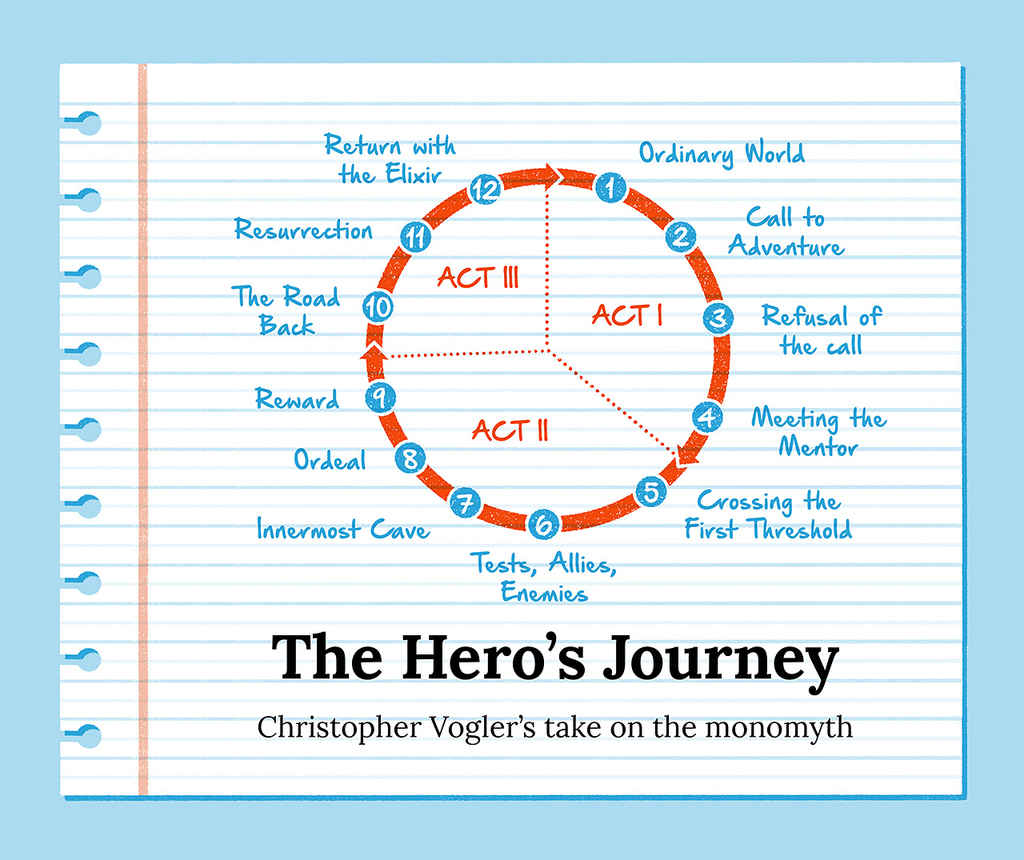 Inspired by Joseph Campbell’s concept of the monomyth — a storytelling pattern that recurs in mythology all over the world — The Hero’s Journey is today’s best-known story structure. Some attribute its popularity to George Lucas, whose Star Wars was heavily influenced by Campbell’s The Hero With a Thousand Faces.
Inspired by Joseph Campbell’s concept of the monomyth — a storytelling pattern that recurs in mythology all over the world — The Hero’s Journey is today’s best-known story structure. Some attribute its popularity to George Lucas, whose Star Wars was heavily influenced by Campbell’s The Hero With a Thousand Faces.

Campbell’s original structure uses terminology that lends itself well to epic tales of bravery and triumph — with plot points like “Belly of the Whale,” “Woman as the Temptress,” and “The Magic Flight.” To make The Hero’s Journey more accessible, Disney executive Christopher Vogler created a simplified version that has become popular amongst mainstream storytellers.
Q: How can writers incorporate popular story models like The Hero's Journey and Save the Cat while maintaining originality and creativity in their writing?
Suggested answer
Saving the cat can come into play in many forms. At the end of the day, readers want to root for likable heroes. If you make your main character sympathetic in some way, that sort of ticks the "saving the cat" box off nicely.
A journey can comprise so many forms. It can be a literal journey Dorothy takes from Kansas to Oz and then back again in The Wizard of Oz, or it can be an inner journey of deciding to take charge of his life and not let others make his decisions for him, as we see with Macon Leary in the book The Accidental Tourist.
As long as your "save the cat" moment and "hero's journey" uses unique ideas that have not become cliché, you should be fine.
Melody is available to hire on Reedsy ⏺
Here, we’ll look at Vogler’s streamlined, 12-step version of The Hero’s Journey.
Structure
- The Ordinary World. The hero’s everyday life is established.
- The Call of Adventure. Otherwise known as the inciting incident.
- Refusal of the Call. For a moment, the hero is reluctant to take on the challenge.
- Meeting the Mentor. Our hero meets someone who prepares them for what lies ahead — perhaps a parental figure, a teacher, a wizard, or a wise hermit.
- Crossing the First Threshold. The hero steps out of their comfort zone and enters a ‘new world.’
- Tests, Allies, Enemies. Our protagonist faces new challenges — and maybe picks up some new friends. Think of Dorothy on the Yellow Brick Road.
- Approach to the Inmost Cave. The hero gets close to their goal. Luke Skywalker reaches the Death Star.
- The Ordeal. The hero meets (and overcomes) their greatest challenge yet.
- Reward (Seizing the Sword). The hero obtains something important they were after, and victory is in sight.
- The Road Back. The hero realizes that achieving their goal is not the final hurdle. In fact, ‘seizing the sword’ may have made things worse for them.
- Resurrection. The hero faces their final challenge — a climactic test that hinges on everything they’ve learned over their journey.
- Return with the Elixir. Having triumphed, our protagonist returns to their old life. Dorothy returns to Kansas; Iron Man holds a press conference to blow his own trumpet.
While Vogler’s simplified steps still retain some of Campbell’s mythological language with its references to swords and elixirs, the framework can be applied to almost any genre of fiction. To see how a ‘realistic’ story can adhere to this structure, check out our guide to the hero’s journey in which we analyze Rocky through this very lens.
3. Three Act Structure
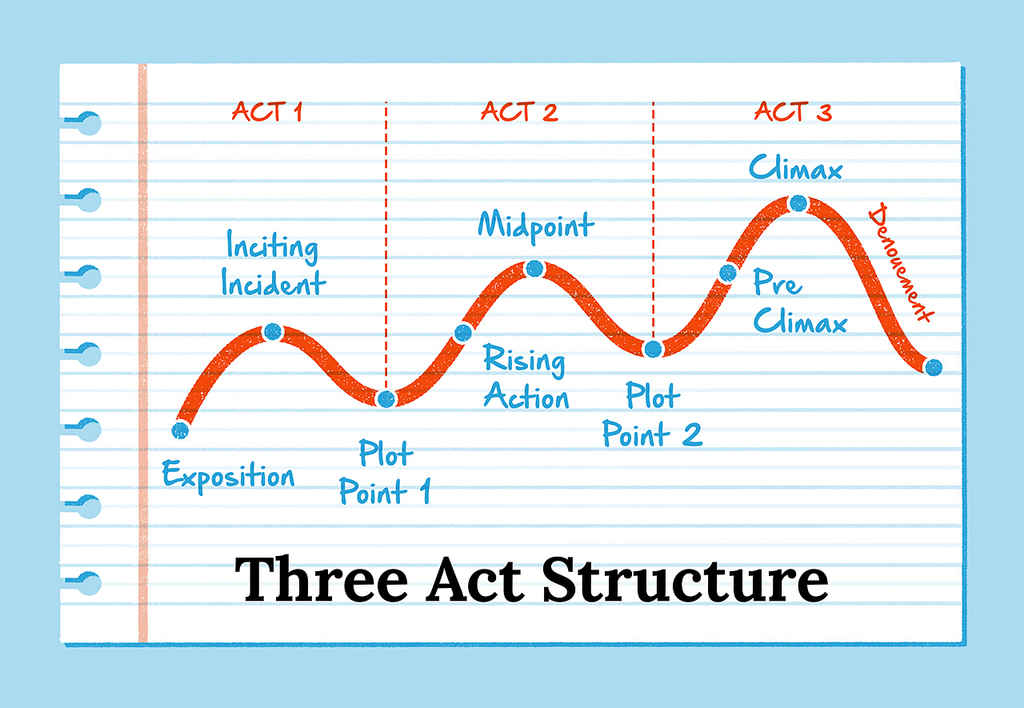 Following the old adage that “every story has a beginning, middle, and end,” this popular structure splits a story’s components into three distinct acts: Setup, Confrontation, and Resolution. In many ways, the three-act structure reworks The Hero’s Journey, with slightly less exciting labels.
Following the old adage that “every story has a beginning, middle, and end,” this popular structure splits a story’s components into three distinct acts: Setup, Confrontation, and Resolution. In many ways, the three-act structure reworks The Hero’s Journey, with slightly less exciting labels.
Structure
Act 1: Setup
- Exposition. The status quo or ‘ordinary world’ is established.
- Inciting Incident. An event that sets the story in motion.
- Plot Point One. The protagonist decides to tackle the challenge head-on. She ‘crosses the threshold,’ and the story is now truly moving.
Act 2: Confrontation
- Rising Action. The story's true stakes become clear; our hero grows familiar with her ‘new world’ and has her first encounters with some enemies and allies. (see Tests, Allies, Enemies)
- Midpoint. An event that upends the protagonist’s mission. (Similar to the climax in Freytag’s pyramid)
- Plot Point Two. In the wake of the disorienting midpoint, the protagonist is tested — and fails. Her ability to succeed is now in doubt.
Act 3: Resolution
- Pre Climax. The night is darkest before dawn. The protagonist must pull herself together and choose between decisive action and failure.
- Climax. She faces off against her antagonist one last time. Will she prevail?
- Denouement. All loose ends are tied up. The reader discovers the consequences of the climax. A new status quo is established.
When we speak about a confrontation with an antagonist, this doesn’t always mean a fight to the death. In some cases, the antagonist might be a love rival, a business competitor, or merely an internal or environmental conflict that our protagonist has been struggling with the entire story.
Q: What advice would you give to someone who wants to become a full-time writer?
Suggested answer
Write. Write every day. Work on your craft. Join a writers group and share your writing with others, get feedback, and provide feedback on their writing.
Writing is like exercise. You have to work on it consistently and build it up over time.
Maria is available to hire on Reedsy ⏺
If you’re interested in using this model to plot your own story, read our guide to the three-act structure, and be sure to sign up to our course on the subject.
4. Dan Harmon's Story Circle
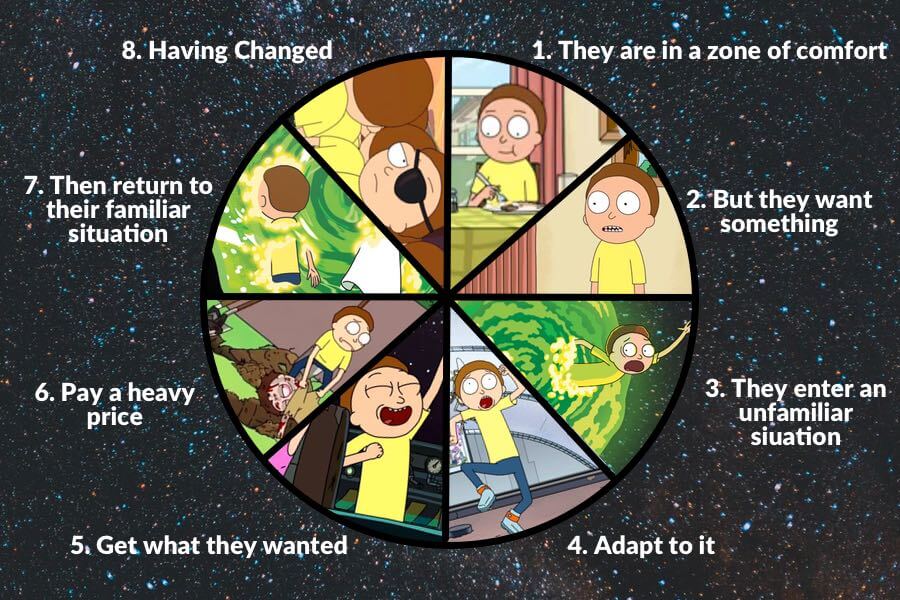
Another variation on Campbell’s monomyth structure, the Story Circle is an approach developed by Rick and Morty co-creator Dan Harmon. Again, heavily inspired by the Hero's Journey, the benefit of Harmon's approach is its focus on the protagonist's character arc. Instead of referring to abstract concepts like 'story midpoint' and 'denouement', each beat in the story circle forces the writer to think about the character's wants and needs.
Structure
- A character is in a zone of comfort... This is the establishment of the status quo.
- But they want something... This 'want' could be something long-standing and brought to the fore by an inciting incident.
- They enter an unfamiliar situation... The protagonist must do something new in their pursuit of the thing they want.
- Adapt to it... Faced with some challenges, they struggle then begin to succeed.
- Get what they wanted... Usually a false victory.
- Pay a heavy price for it... They realize that what they 'wanted' wasn't what they 'needed'.
- Then return to their familiar situation... armed with a new truth.
- Having changed... For better or worse.
Created by a writer whose chosen medium is the 30-minute sitcom, this structure is worded in a way that sidesteps the need for a protagonist to undergo life-changing transformations with each story. After all, for a comedy to continue for six seasons (and a movie) its characters can't completely transform at the end of each episode. They can, however, learn small truths about themselves and the world around them — which, like all humans, they can quickly forget about if next week's episode calls for it.
To learn more and see this structure applied to an episode of Rick and Morty, check out our full post on Dan Harmon's Story Circle.
Side note: for this kind of character-driven plot (and, indeed, for all of these structures), you're going to want to know you're protagonist inside and out. Why not check out some of our character development exercises for help fleshing your characters out, like the profile template below.
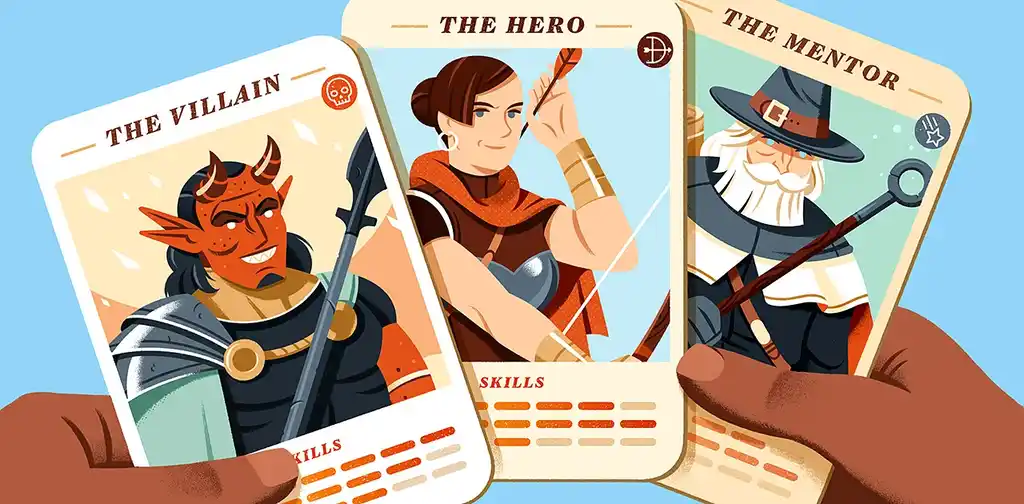
FREE RESOURCE
Reedsy’s Character Profile Template
A story is only as strong as its characters. Fill this out to develop yours.
5. Fichtean Curve
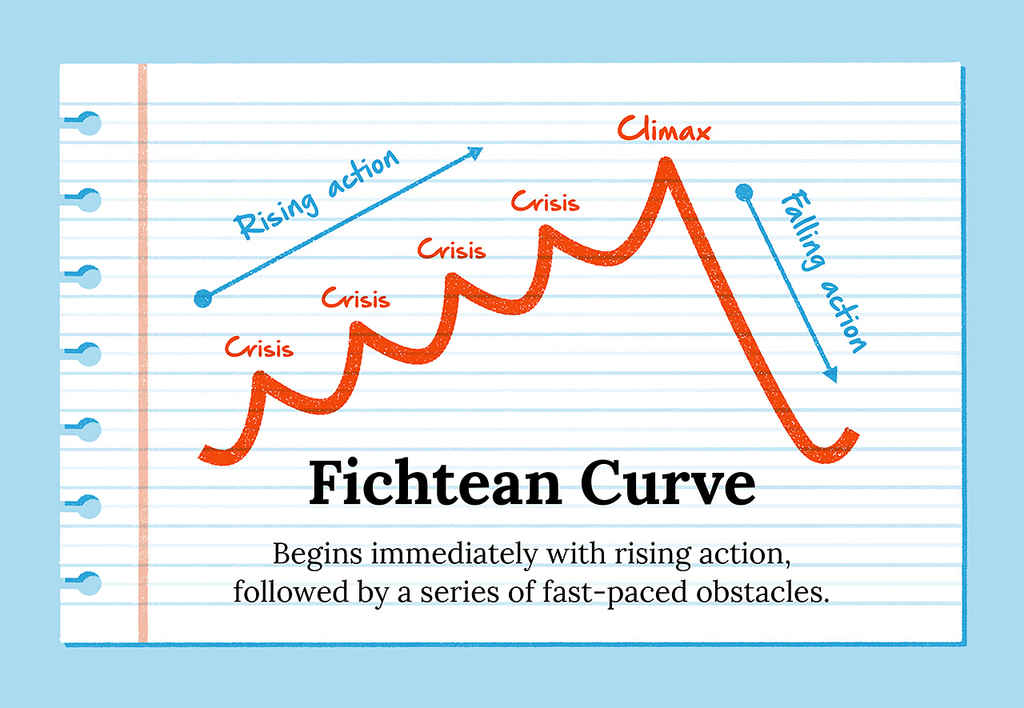
Fleshed out in John Gardner’s The Art of Fiction, the Fichtean Curve is a narrative structure that puts our main characters through a series of many obstacles on their way to achieving their overarching goals. Resembling Freytag’s Pyramid, it encourages authors to write narratives packed with tension and mini-crises that keep readers eager to reach the climax.
Bypassing the “ordinary world” setup of many other structures, the Fichtean Curve starts with the inciting incident and goes straight into the rising action. Multiple crises occur, each of which contributes to the readers’ overall understanding of the narrative — replacing the need for the initial exposition.
Structure
To discuss this unusual structure, it’s perhaps best to see it in use. We’ll use Celeste Ng’s Everything I Never Told You as an example. Needless to say, spoilers ahead.
Rising Action
-
![]() Inciting incident. The novel begins with the line: “Lydia is dead. But they don’t know this yet.” Within the first three paragraphs, Marilyn realizes that her daughter Lydia is missing. Thus, readers are thrown straight into rising action as Marilyn anxiously searches all the usual places Lydia might be found.
Inciting incident. The novel begins with the line: “Lydia is dead. But they don’t know this yet.” Within the first three paragraphs, Marilyn realizes that her daughter Lydia is missing. Thus, readers are thrown straight into rising action as Marilyn anxiously searches all the usual places Lydia might be found. - First crisis. Lydia’s family is informed her body was found in a nearby lake. From this first crisis's climax, the narrative flashes back to provide exposition and details of the family’s history.
- Second crisis. In flashbacks, we discover that, 11 years prior, Marilyn abandoned her family to resume her undergraduate studies. In her absence, the family begins to fall apart. Marilyn learns she is pregnant and is forced to return home. Having lost her opportunity for further education, she places the pressure of academic success on her children.
- Third crisis. Back in the present, Lydia’s father, James, is cheating on Marilyn. The police decide to close the investigation, ruling Lydia’s death a suicide. This results in a massive argument between her parents, and James leaves to stay with the “other woman.”
- Fourth crisis. Flashback to the day Lydia died. From her perspective, we see that she’s misunderstood by her parents. She mourns her brother’s impending departure for college, leaving her as the sole focus of her parents’ pressure. Isolated, she tries to seduce a friend — who rejects her advances and explains he’s in love with her brother.
Q: What are the most common craft mistakes new authors make?
Suggested answer
One of the biggest mistakes I see from new authors is that they finish writing their manuscript and then they think they are done and ready for an editor to go through and review.
Writers need to be their own editors first. Because there are so many potential new authors every day, it's imperative that writers go back and edit their work thoroughly. That means reading, and rereading what they've written to understand how their characters develop through their novel, or how the topics that they brought up in chapter two are refined and built upon in chapter nine. Through that reading process, writers should be editing their work as they find pieces that aren't strong enough or need to be altered to make a better overall manuscript.
Matt is available to hire on Reedsy ⏺
The most common writing mistake I see from first-time authors is cramming too much into the first chapter. Your first chapter is a meet and greet, where you establish credibility, likability, and optimism that the book is worth the reader's time. Hook the reader, show your personality, but don't dump all your knowledge on them at the beginning of the book. Take them on an interesting, helpful journey,
Mike is available to hire on Reedsy ⏺
Climax
- Lydia takes a boat into the lake in the middle of the night — determined to overcome her fear of water and reclaim control of her life. Lydia jumps off the boat, into the water, and out of this life. As in a classical tragedy, this moment is both devastating and inevitable.
Falling Action
- Some level of resolution is achieved, and readers get to at least glimpse the “new norm” for the characters. Lydia’s family lean on one another in their grief. While they may never be able to make their amends with Lydia, they can learn from her death. Not all of the loose ends are tied off, but readers infer the family is on the long road to recovery.
Note: In the rising action stage, all of the crises should build tension towards — and correspond with — the story’s major climax. Like the three-act narrative structure, the Fichtean Curve’s climax typically occurs two-thirds through the book.
While this structure lends itself well to flashback-heavy novels such as Everything I Never Told You, it is also incredibly common in theatre. In stage plays like The Cherry Orchard and A Doll’s House, the action takes place in a fixed time and place, but backstory and character development are revealed through moments of high drama that occur before the audience’s eyes.
For a deeper look at this structure, head to our full post on the Fichtean Curve.
6. Save the Cat Beat Sheet
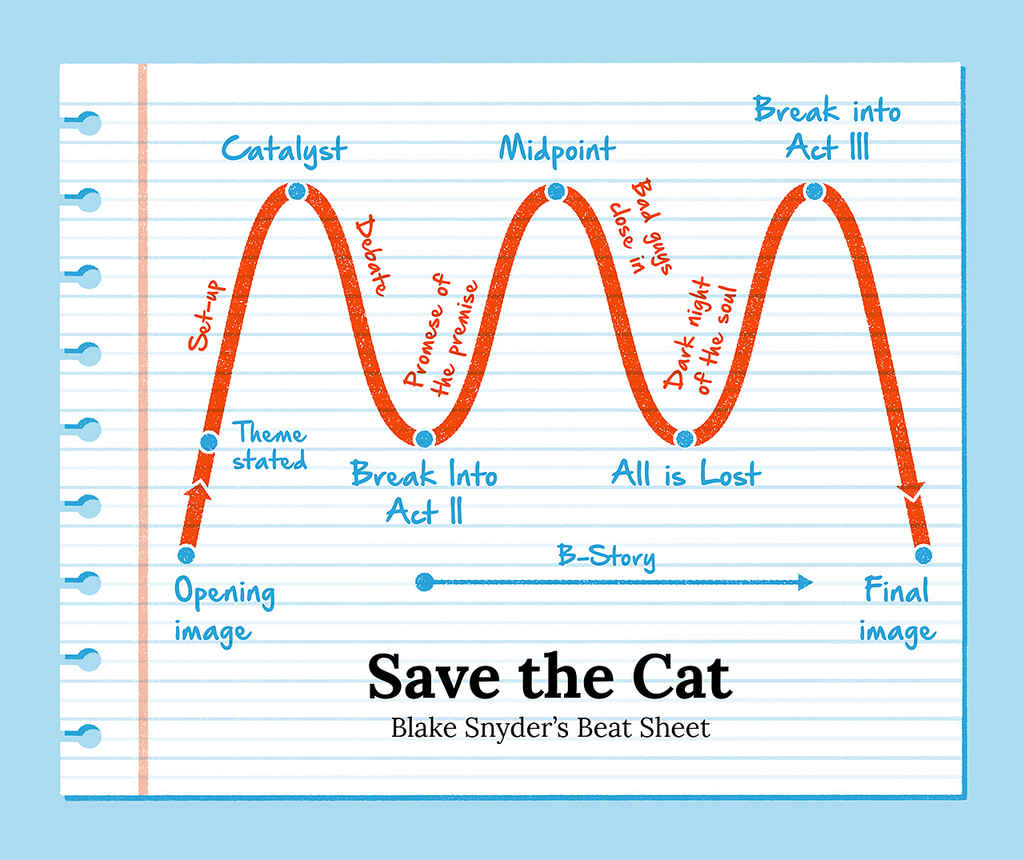
Another variation of the three-act structure, this framework created by Hollywood screenwriter Blake Snyder, has been widely championed by storytellers across many media forms.
Fun fact: Save the Cat is named for a moment in the set up of a story (usually a film) where our hero does something to endear himself to the audience.
While many structures are reluctant to prescribe exactly when in a story the various beats should take place, Snyder and Save the Cat have no such qualms. The number in the square brackets below refers to the page that the beat should take place — assuming you’re writing a 110-page screenplay.
Structure
- Opening Image [1]. The first shot of the film. If you’re starting a novel, this would be an opening paragraph or scene that sucks readers into the world of your story.
- Set-up [1-10]. Establishing the ‘ordinary world’ of your protagonist. What does he want? What is he missing out on?
- Theme Stated [5]. During the setup, hint at what your story is really about — the truth that your protagonist will discover by the end.
- Catalyst [12]. The inciting incident!
- Debate [12-25]. The hero refuses the call to adventure. He tries to avoid the conflict before they are forced into action.
- Break into Two [25]. The protagonist makes an active choice and the journey begins in earnest.
- B Story [30]. A subplot kicks in. Often romantic in nature, the protagonist’s subplot should serve to highlight the theme.
- The Promise of the Premise [30-55]. Often called the ‘fun and games’ stage, this is usually a highly entertaining section where the writer delivers the goods. If you promised an exciting detective story, we’d see the detective in action. If you promised a goofy story of people falling in love, let’s go on some charmingly awkward dates.
- Midpoint [55]. A plot twist occurs that ups the stakes and makes the hero’s goal harder to achieve — or makes them focus on a new, more important goal.
- Bad Guys Close In [55-75]. The tension ratchets up. The hero’s obstacles become greater, his plan falls apart, and he is on the back foot.
- All is Lost [75]. The hero hits rock bottom. He loses everything he’s gained so far, and things are looking bleak. The hero is overpowered by the villain; a mentor dies; our lovebirds have an argument and break up.
- Dark Night of the Soul [75-85-ish]. Having just lost everything, the hero shambles around the city in a minor-key musical montage before discovering some “new information” that reveals exactly what he needs to do if he wants to take another crack at success. (This new information is often delivered through the B-Story)
- Break into Three [85]. Armed with this new information, our protagonist decides to try once more!
- Finale [85-110]. The hero confronts the antagonist or whatever the source of the primary conflict is. The truth that eluded him at the start of the story (established in step three and accentuated by the B Story) is now clear, allowing him to resolve their story.
- Final Image [110]. A final moment or scene that crystallizes how the character has changed. It’s a reflection, in some way, of the opening image.
Some writers may find this structure too prescriptive, but it’s incredible to see how many mainstream stories seem to adhere to it — either by design or coincidence. Over on the Save the Cat website, there are countless examples of films and novels analyzed with Snyder’s 15 beats. You’ll be surprised how accurate some of the timings are for each of the beats.
Q: What daily writing routines can help authors maintain consistent productivity?
Suggested answer
+ Never underestimate the power of enough sleep. This can cure more things than we know - how we show up, what we're capable of tackling each day.
+ Nourishing food to fuel the mind.
+ Movement - even if it's a walk around the block listening to a podcast, music or just deep in thought (often the best times when ideas arise).
After these three things are locked in:
+ Quiet, undistracted time blocks (even if it means phone in another room for 90 mins)
+ A laptop that has nothing else except Word on it (no website access).
+ For those who are visual, keeping a yellow sticky note daily "checklist" on a wall, to encourage a daily writing tally.
+ Ask for feedback for continual improvement.
Leoni is available to hire on Reedsy ⏺
There are four things that I consider before settling in to write.
What sounds are there? The best is silence, but in a city environment this is impossible. If there are specific loud that I want to block out, I listen to drone music. This consists mostly of long, sustained notes (no melodies) and comes from the American and German post-war experimental musical traditions. The texture of the sounds is often rich which works for this purpose quite well. It has a meditative effect. Failing this, music without lyrics is also good.
What is my phone doing? Just switch it off.
Social media. Along with my phone, this is designed to distract. What I do is log out of my social media accounts. If I automatically go back in, I'm then met by the login page. This doesn't sound like much of a difference, but is just enough to nudge myself into becoming mindful of what I'm doing and what my present purpose it. And mindfulness is key.
Lastly, I take a page of Hemingway's advice: "The first draft of anything is s**t." It's ok to produce bad writing. In fact, it's totally ok; actually it's great. Why? Because my ideas are now down on the page, even if it's absolutely horrible. Nobody ever simply writes a finished product straight off the bat. I'll make it better later and that is a different process.
Don is available to hire on Reedsy ⏺
Get all domestic and admin chores out the way first, so that there is nothing else on your mind when you sit down to write. Then just stick at it for as long as possible.
Andrew is available to hire on Reedsy ⏺
For a deeper dive into this framework, and to watch this video where Reedsy’s Shaelin plots out a Middle-Grade fantasy novel using Snyder’s method — head to our full post on the Save the Cat Beat Sheet.
7. Seven-Point Story Structure
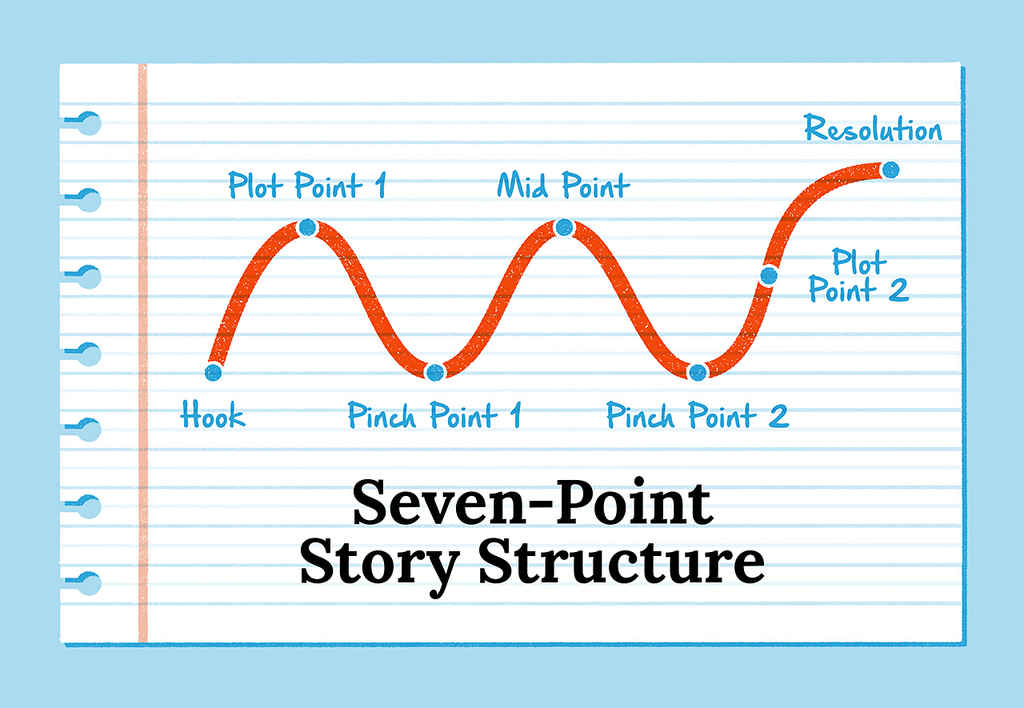
A slightly less detailed adaptation of The Hero’s Journey, the Seven-Point Story Structure focuses specifically on the highs and lows of a narrative arc.
According to author Dan Wells, who developed the Seven-Point Story Structure, writers are encouraged to start at the end, with the resolution, and work their way back to the starting point: the hook. With the ending in mind, they can have their protagonist and plot begin in a state that best contrasts the finale — since this structure is all about dramatic changes from beginning to end.
Structure
- The Hook. Draw readers in by explaining the protagonist’s current situation. Their state of being at the beginning of the novel should be in direct contrast to what it will be at the end of the novel.
- Plot Point 1. Whether it’s a person, an idea, an inciting incident, or something else — there should be a "Call to Adventure" of sorts that sets the narrative and character development in motion.
- Pinch Point 1. Things can’t be all sunshine and roses for your protagonist. Something should go wrong here that applies pressure to the main character, forcing them to step up and solve the problem.
- Midpoint. A “Turning Point” wherein the main character changes from a passive force to an active force in the story. Whatever the narrative’s main conflict is, the protagonist decides to start meeting it head-on.
- Pinch Point 2. The second pinch point involves another blow to the protagonist — things go even more awry than they did during the first pinch point. This might involve the passing of a mentor, the failure of a plan, the reveal of a traitor, etc.
- Plot Point 2. After the calamity of Pinch Point 2, the protagonist learns that they’ve actually had the key to solving the conflict the whole time.
- Resolution. The story’s primary conflict is resolved — and the character goes through the final bit of development necessary to transform them from who they were at the start of the novel.
For a deeper look into Wells's approach — including the key to using it — check out our full post on the seven-point story structure.
We've said it before, and we'll say it again: story structures aren't an exact science, and you should feel welcome to stray from the path they present. They're simply there to help you find your narrative's footing — a blueprint for the world you're about to start building.
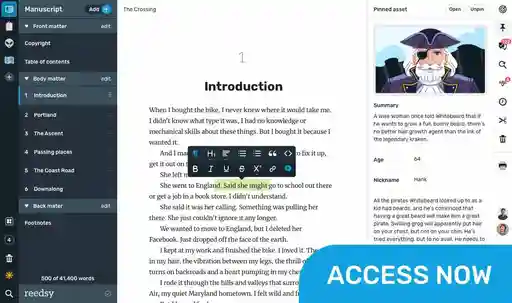

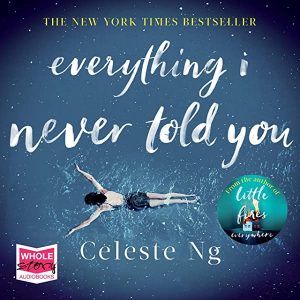 Inciting incident. The novel begins with the line: “Lydia is dead. But they don’t know this yet.” Within the first three paragraphs, Marilyn realizes that her daughter Lydia is missing. Thus, readers are thrown straight into rising action as Marilyn anxiously searches all the usual places Lydia might be found.
Inciting incident. The novel begins with the line: “Lydia is dead. But they don’t know this yet.” Within the first three paragraphs, Marilyn realizes that her daughter Lydia is missing. Thus, readers are thrown straight into rising action as Marilyn anxiously searches all the usual places Lydia might be found.